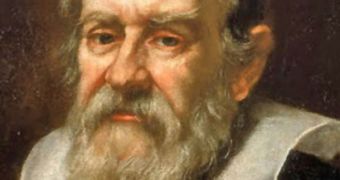Researchers from Italy and the UK are currently engaged in actions meant to grant them the possibility of harvesting DNA samples from the body of the father of modern astronomy, Galileo Galilei. It's historically known that the great scientist suffered from intermittent eye problems over the second half of his life, and records tell that he was blind for the last two years of his house arrest, dictated by the Catholic church, following his theories.
Galileo was brutally humiliated by the church, because he opposed the astronomical model that was "mainstream" at the time. He was a supporter of Copernicus, the first to say that the Earth revolved around the Sun, and not the other way around. For his "heresy," Galileo was sentenced to house arrest for the rest of his life, and spent the time scouting the skies and recording data of satellites, moon craters and the movements of planets.
Now, scientists want to recreate exactly what the astronomer saw through his eyes, by identifying potential diseases Galileo may have been suffering from. They plan to analyze his DNA for afflictions, and, based on what they find, design a computer model to show them exactly what the man saw when looking through his telescope at the Universe, more than 400 years ago.
"If we knew exactly what was wrong with his eyes, we could use computer models to recreate what he saw in his telescope," the Florence Museum of History and Science director Paolo Galluzzi says. The Italian city of Florence is the place where Galileo's remains are still buried, and the scientists are hoping to get consent for the digs, although that seems were unlikely to happen in the future.
A consultant to Addenbrooke's University Hospital in Cambridge, Dr. Peter Watson argues that "There were periods when he saw very well, and periods when he did not see very well." Watson is also the president of the Academia Ophthalmologica Internationalis. He explains that, based on the writings and notes that Galileo left behind, he thinks that the astronomer may have suffered from conditions such as unilateral myopia, uveitis, or one called creeping angle closure glaucoma.
"This was probably a combination of errors. He probably expected to find satellites and his eyesight may have contributed to some confusion. A DNA test will allow us to determine to what measure the pathology of the eye may have 'tricked' him. If we discover the pathology he suffered, we can formulate a mathematical model that simulates the effects it would have had on what he saw, and using the same type of telescope he used we can get closer to what he actually saw," Galluzzi concludes.

 14 DAY TRIAL //
14 DAY TRIAL //